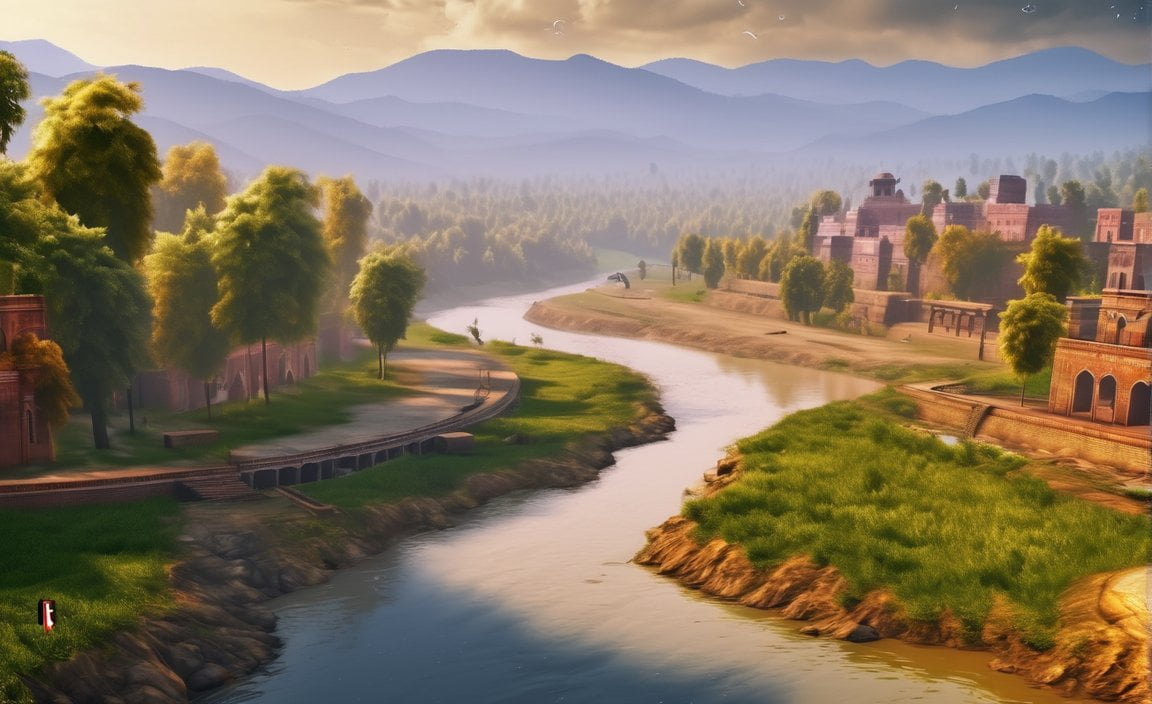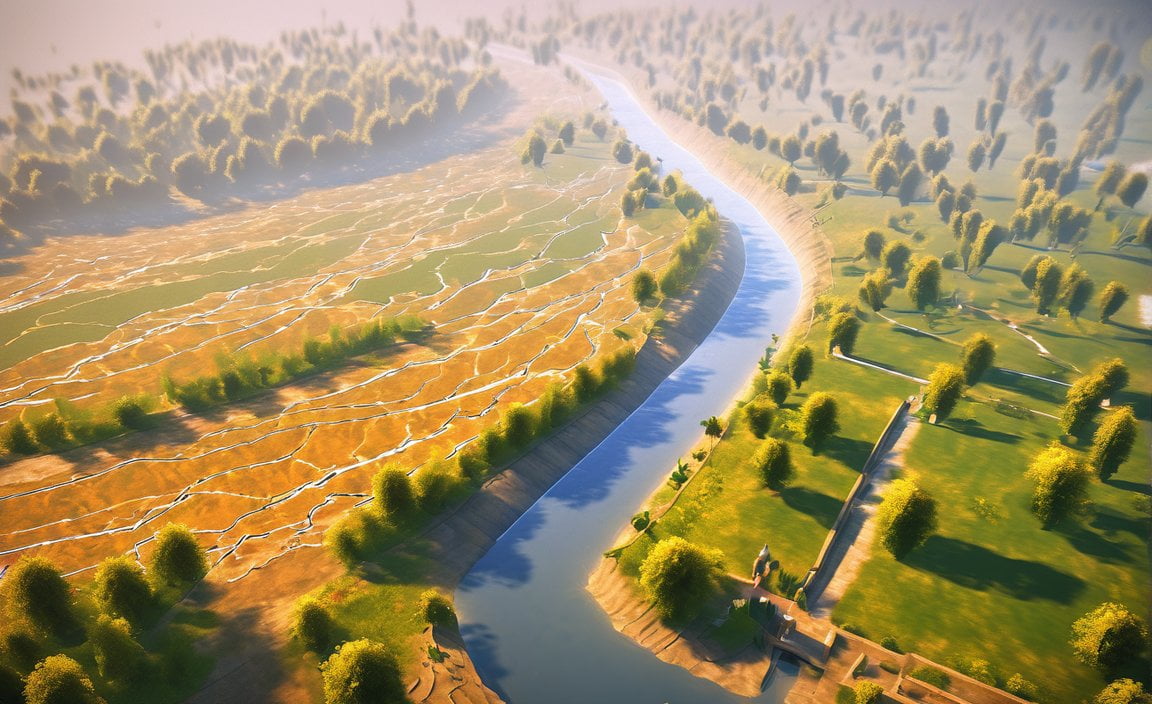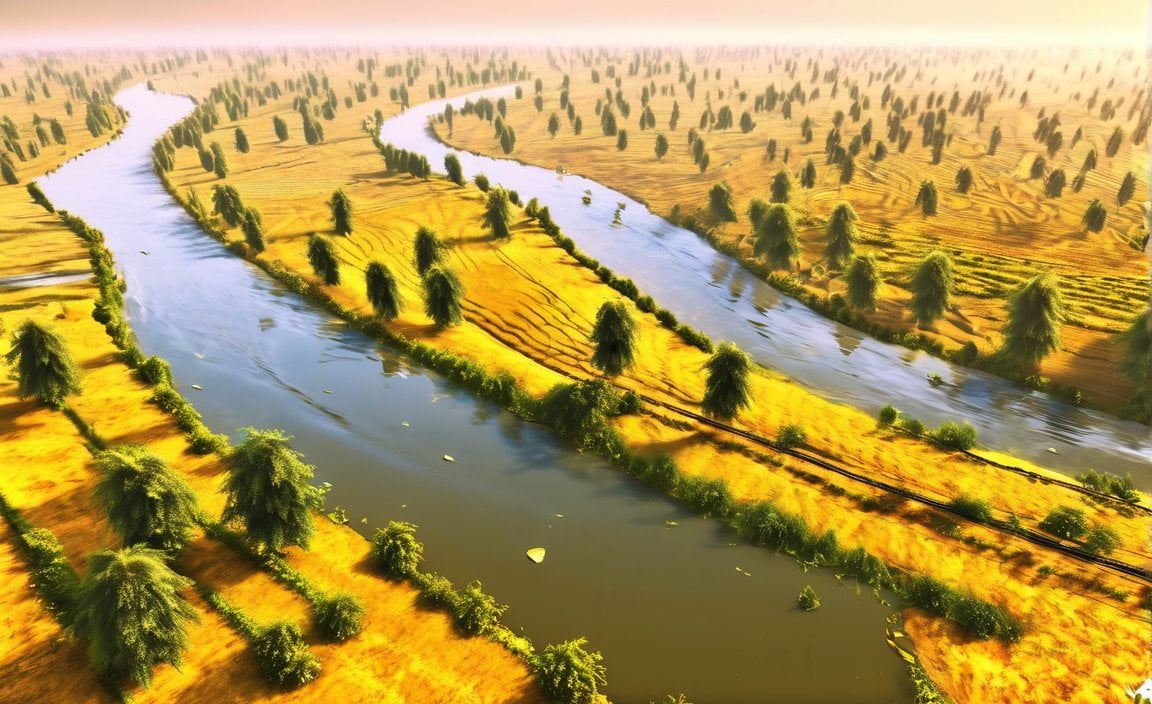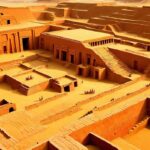Hey there, curious travelers! Let’s dive into the magical world of Punjab and explore its enchanting rivers. These water wonders are like the veins of this beautiful region, flowing through history, culture, and everyday life. From the legendary Ravi to the mighty Sutlej, each river has its own tale to tell. So, buckle up and get ready for an unforgettable journey along Punjab’s liquid lifelines!

Which are the 5 Rivers of Punjab?
Punjab, aptly called the “Land of Five Rivers,” is renowned for the Sutlej, Beas, Ravi, Chenab, and Jhelum rivers. These rivers, tributaries of the Indus, play a vital role in agriculture, hydropower generation, and tourism in the region. Let’s get to know these watery wonders a bit better:
- Sutlej (or Satluj): The Sutlej, known in Sanskrit as Shatadru, holds the title of being the easternmost tributary of the mighty Indus River.
- Beas: The Beas River, referred to as Vipasa in Sanskrit, is recognized as Arjikiya in the ancient Vedas.
- Ravi: The Ravi River, known as Iravati in Sanskrit, also boasts the Vedic name Purushini.
- Chenab: The Chenab, while lacking a confirmed Sanskrit name, is the largest by volume among Punjab’s five rivers and plays a crucial role in agriculture.
- Jhelum: With the Sanskrit name Vitasta, the Jhelum flows through the captivating Kashmir Valley, holding deep historical significance.
The confluence of these five rivers forms the Panjnad, which eventually joins the Indus River.
These rivers are not just geographical features; they are the lifeblood of Punjab, shaping its geography and sustaining its economy. They support agricultural activities by providing irrigation, facilitate hydropower generation, and attract tourists with their scenic beauty and recreational opportunities. The five rivers gave Punjab its name, “Punj” meaning five and “Aab” meaning water. Their names in Sanskrit reflect ancient cultural and religious traditions, and the rivers played a crucial role in developing Sikhism and other religions in the region.
- 5 lines about snail: Want to learn some fascinating facts about snails? Check out this article where you’ll find five interesting lines about these slow-moving creatures.
- 5 types of environmental pollution: Curious about the different ways our environment gets polluted? Click here to discover five types of environmental pollution and learn how they impact our planet.
- 5 ways to reduce plastic pollution: Are you concerned about plastic pollution and want to take action? Explore this article to find five effective ways that can help reduce plastic pollution and protect our oceans and wildlife.

What are the 5 Darya of Pakistan?
The five rivers – Sutlej, Beas, Ravi, Chenab, and Jhelum – are not merely geographical features; they are the very essence of Punjab. These rivers have shaped the rich cultural and historical tapestry of Punjab, fostering agriculture, trade, and human settlement. Beyond their geographical significance, the Five Rivers are deeply intertwined with the Sikh faith and serve as symbols of purity and spirituality. Their presence has contributed to Punjab’s economic prosperity and played a vital role in developing its diverse ecosystem.
Here’s a quick look at the significance of each river:
| River | Significance |
|---|---|
| Sutlej | Longest of the five, vital for irrigation |
| Beas | Known for its scenic beauty, joins the Sutlej |
| Ravi | Flows near Lahore, culturally significant |
| Chenab | Largest by volume, crucial for agriculture |
| Jhelum | Flows through Kashmir, historically significant |
What are the 5 Rivers of India?
The five rivers of Punjab—Beas, Sutlej, Ravi, Chenab, and Jhelum—originate from the Himalayas and provide a continuous source of water due to glacial melt. Punjab’s rivers have played a pivotal role in its history and culture, shaping its landscapes, facilitating economic development, and today, only three rivers—Satluj, Beas, and Ravi—flow through the Indian state of Punjab, while Jhelum and Chenab flow through Pakistan’s Punjab. The five rivers of Punjab converge to form the Panjnad, which joins the Indus River.
Here’s a closer look at each river:
- Beas: The name Beas means “incomparable,” and the Beas River is famous for its pure, clear waters and the deep spiritual significance it holds.
- Sutlej: This is the largest of the five rivers. The Sutlej is a powerful force of nature, carving out dramatic gorges and expansive valleys throughout its course.
- Ravi: Born in the picturesque Ravi Valley, this river is all about scenic beauty and abundant aquatic life.
- Chenab: The Chenab River is characterized by its captivating emerald-green waters, serving as a major source of hydroelectric power for the entire region.
- Jhelum: Situated as the westernmost of the five rivers, the Jhelum holds a special place in the hearts of the people. Its spiritual significance is profound, with its banks adorned by ancient temples and sacred bathing places known as “ghats.”
What are the 5 Rivers of Punjab in Greek?
The Greek names of Punjab’s five main rivers are Satadree (Sutlej River), Vipasa (Beas River), Akesínes (Chenab River), Hydaspes (Jhelum River), and Hyphasis (Satluj River).
- Satadree (Sutlej River): The Sutlej River was known to the ancient Greeks as the “Satadree.”
- Vipasa (Beas River): The Greeks knew the Beas River as the “Vipasa.”
- Akesínes (Chenab River): The mighty Chenab was referred to as the “Akesínes” by those in ancient Greece.
- Hydaspes (Jhelum River): The Jhelum River, known for its significance in Alexander the Great’s campaigns, was referred to as the “Hydaspes” by those in ancient Greece.
- Hyphasis (Satluj River): The Satluj River. sometimes considered a tributary in its own right, was called the “Hyphasis” by the Greeks.
These names are a big clue about how Alexander the Great’s invasion in the 4th century BC left a mark on the region’s history. Punjab’s five rivers, collectively known as the Panjnad, have profound historical and cultural significance, shaping the region’s landscape and fostering its development.
What is the Old Name of Punjab?
Long before “Punjab” was the common term for the region, it was known as “Panchanada,” a name echoing since the times of the epic Mahabharata, and one that speaks volumes about Punjab’s deep-rooted history and rich cultural tapestry.
The term “Punjab” originates from the Persian words “panj” and “aab,” meaning “five” and “water” respectively, highlighting its defining geographical feature. The five major rivers flowing through Punjab—Beas, Chenab, Jhelum, Ravi, and Sutlej—are tributaries of the mighty Indus River, shaping the landscape and providing life-sustaining water sources.
What is the Old Dariya in Punjab?
The “old dariya” refers to the original path of the Sutlej River, one of the five main rivers of Punjab. Over time, natural forces such as erosion and tectonic activity can cause rivers to change their course, and the Sutlej is no exception. This shift likely happened gradually over centuries.
Where do Ravi and Chenab Meet?
While the Ravi and Chenab rivers do not meet directly, they both eventually flow into the Jhelum River, which then joins the Chenab, creating the Panjnad River. The Panjnad then merges with the grand Indus River.
Is Punjab in India or Pakistan?
The Punjab region was divided during the partition of India in 1947, leading to the creation of two separate nations: India and Pakistan. As a result, Punjab exists in both India and Pakistan. This division means that some rivers that once flowed solely through a unified Punjab are now shared between the two countries.
How Many Rivers Were There in Punjab Before 1947?
Before the 1947 partition, five major rivers flowed through Punjab: the Sutlej, Beas, Ravi, Chenab, and Jhelum. After the partition, the Sutlej, Beas, and Ravi primarily flowed through India, while the Chenab and Jhelum became part of Pakistan.
Where Does Jhelum Originate?
The Jhelum River starts its journey in Vernag, located in the scenic region of Jammu and Kashmir, India. It begins as a crystal-clear spring, eventually merging with the mighty Indus River. As the westernmost of Punjab’s five major rivers, the Jhelum plays a vital role in the lives of those living along its banks, influencing everything from agriculture to cultural traditions.
Key Points:
- The Sutlej, Beas, Ravi, Chenab, and Jhelum rivers are the five major waterways in Punjab.
- These rivers have historical significance, with ancient cities and sacred sites located along their banks.
- They hold deep spiritual value for the Sikh community, who visit holy sites on their banks.
- The rivers are essential for Punjab’s agriculture, providing water for vast farmlands.
- They connect to form the Panjnad River, which merges with the Indus River, highlighting the interconnectedness of the ecosystem.
- The rivers have witnessed historical events and adapted to the changing needs of the region.
- They embody the essence of Punjab, reflecting its history, culture, and resilience.
- Crypto Quotes’ Red Flags: Avoid Costly Mistakes - June 30, 2025
- Unlock Inspirational Crypto Quotes: Future Predictions - June 30, 2025
- Famous Bitcoin Quotes: A Deep Dive into Crypto’s History - June 30, 2025
















